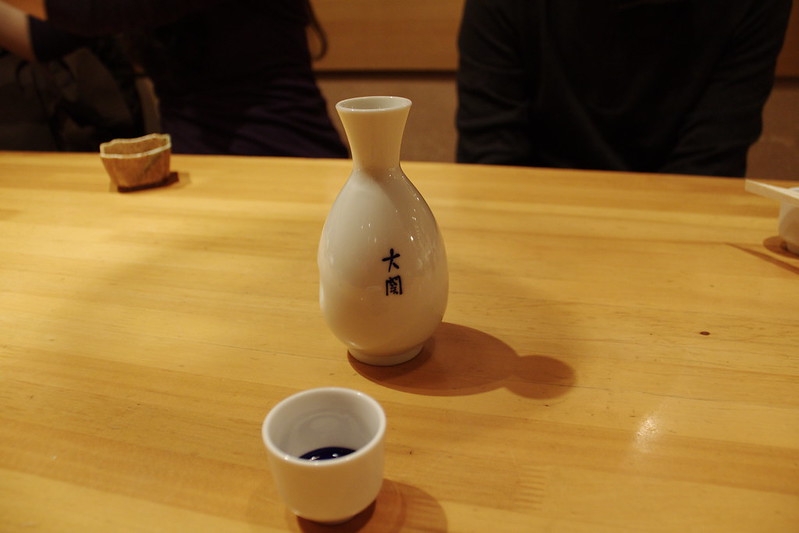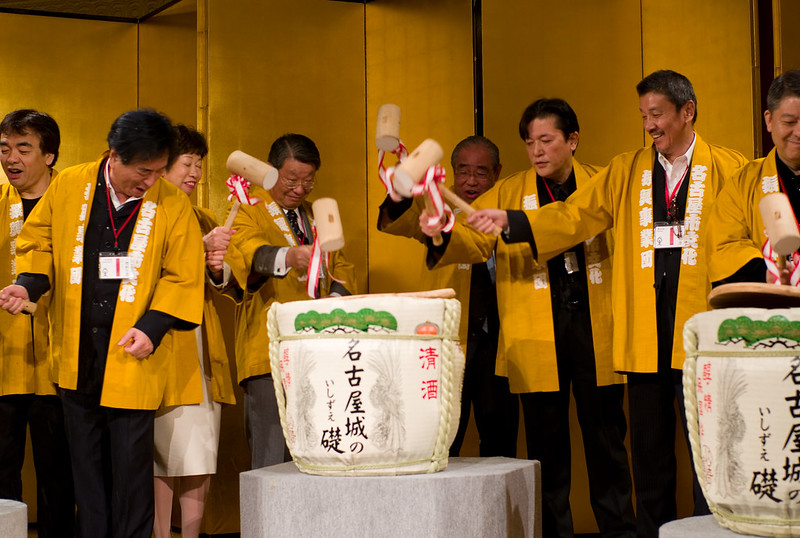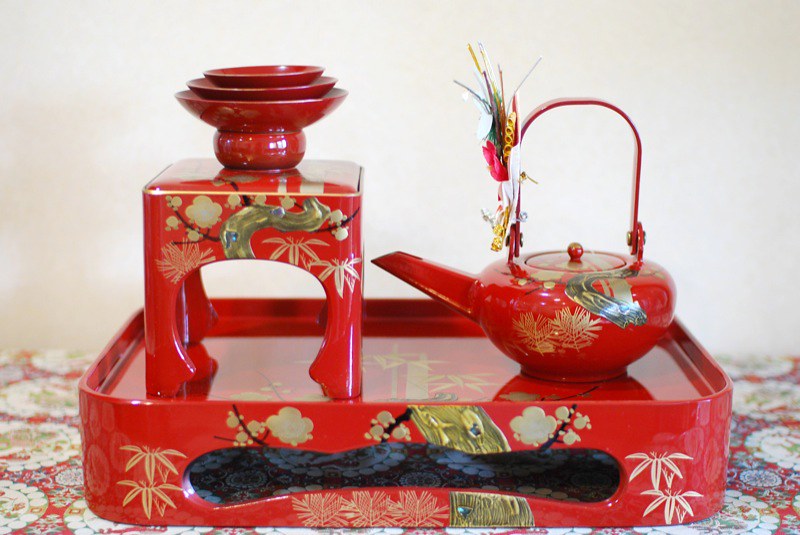Sake
Sake is a traditional Japanese alcoholic drink made during fermentation of rice. Outer layer or bran of a rice grain must be removed. Sake belongs to rice wines. Sake production starts on the 1st October. In Japan this day is know as the Sake Day (Nihonshu no hi). This national event was started in 1978 by the the Japan Sake Brewers Association.
When talking of sake the Japanese usually use word nihonshu. The same as tea, for example, sake is quite often served in a ceremony.
 Shuki tokkuri and sakazuki
Shuki tokkuri and sakazuki
In this ceremony the drink is kept in a ceramic bottle known as a tokkuri. The sake can be served lightly warmed or even hot. The best sake is not served hot as high temperature influence the quality of the drink.
It is done by putting the tokkuri in a shallow vessel filled with water. A person drinks sake from a cup called choko or sakazuki. Joint term for tokkuri and sakazuki cups is shuki.
 Kagami biraki
Kagami biraki
There are situations when sake is served chilled. One should not be surprised when such sake is served in sort of glasses that are usually used for wine.
Long time ago people in Japan used a wooden box called masu to grab certain amount of rice. Nowadays it is often used for drinking sake. Usually a small cup filled with sake is put in the box.
When you are drinking sake with someone the beverage will be poured to you by that person. You should hold your cup and placed it slightly towards the other person. When you are pouring the drink that other person will do the already mentioned ritual.
When people make a toast they say ``kampai''. That word is used when drinking other alcoholic beverages too. Sake can also be drank with various food for example sushi, seafood, different meat etc.
Like most other alcoholic beverages sake must mature. Usually this period lasts between 9 and 12 months. There are off course some exceptions. Koshu (``aged sake'') sake can be drank even after several decades.
There are two basic groups of sake. Most sake available on the market belong to Futs?-shu or ``ordinary sake''. The best sake beverage is known as Tokutei meish?-shu or ``special-designation sake''. There are eight types of this top quality sake.
Sake has its role in the Shinto religion. It is often used in purification rituals performed by a Shinto priest. Sake used in religious rituals is called ``omiki'' or ``miki''. Worshipers drink this sake and kind of establish contact with gods.
Sake is drank during various social events like wedding, for example. This sake is called ``iwai-zake ("celebration sake"). Prior its use this sake is kept in wooden barrels. Just before the beginning of event sake is taken out of the barrel by performing ``kagami biraki'' ceremony.
On the New Year's Eve many Japanese consume a special ``iwai-zake'' or ``toso'' as it is commonly known. Toso is made by soaking of tososan in sake. Some people use a rice wine called mirin instead of an ordinary sake. Tososan includes various herbs like cinnamon, rhubarb, ginger etc. Before drinking toso must be kept during the night.
 Toso
Toso
Toso with tososan exists only in the west of the country and in the Kansai region located on the Honshu island. The Japanese drink toso to kind of destroy all the bad that has happen to them in the passed year. Some also believe that toso could prevent illness.
Three sakazuki cups of various size are used to drink toso. One should drink toso from the smallest one first. If there is a family or any other group of people gathered each person must take a sip.
References Sake https://en.wikipedia.org/wiki/Sake Sake set https://en.wikipedia.org/wiki/Sake_set#Drinking_cups Sake Day https://anydayguide.com/calendar/2541 Sake Etiquette http://www.esake.com/Sake-Food/Etiquette/etiquette.html How to Drink Sake http://www.sakesocial.com/blogs/beau/11418437-how-to-drink-sake Masu (measurement) https://en.wikipedia.org/wiki/Masu_%28measurement%29 Toso https://en.wikipedia.org/wiki/Toso Images Shuki - tokkuri and sakazuki (photo by Marko Kudjerski, Flickr) https://www.flickr.com/photos/marko8904/5373337522/ Kagami Biraki (photo by Joi Ito, Flickr) https://www.flickr.com/photos/joi/3010452288/in/photolist-5A2mzN-97zQpw-dKUg75-7t5ABw-4hkNt8 Toso (photo by midorisyu, Flickr) https://www.flickr.com/photos/midorisyu/2167823486/